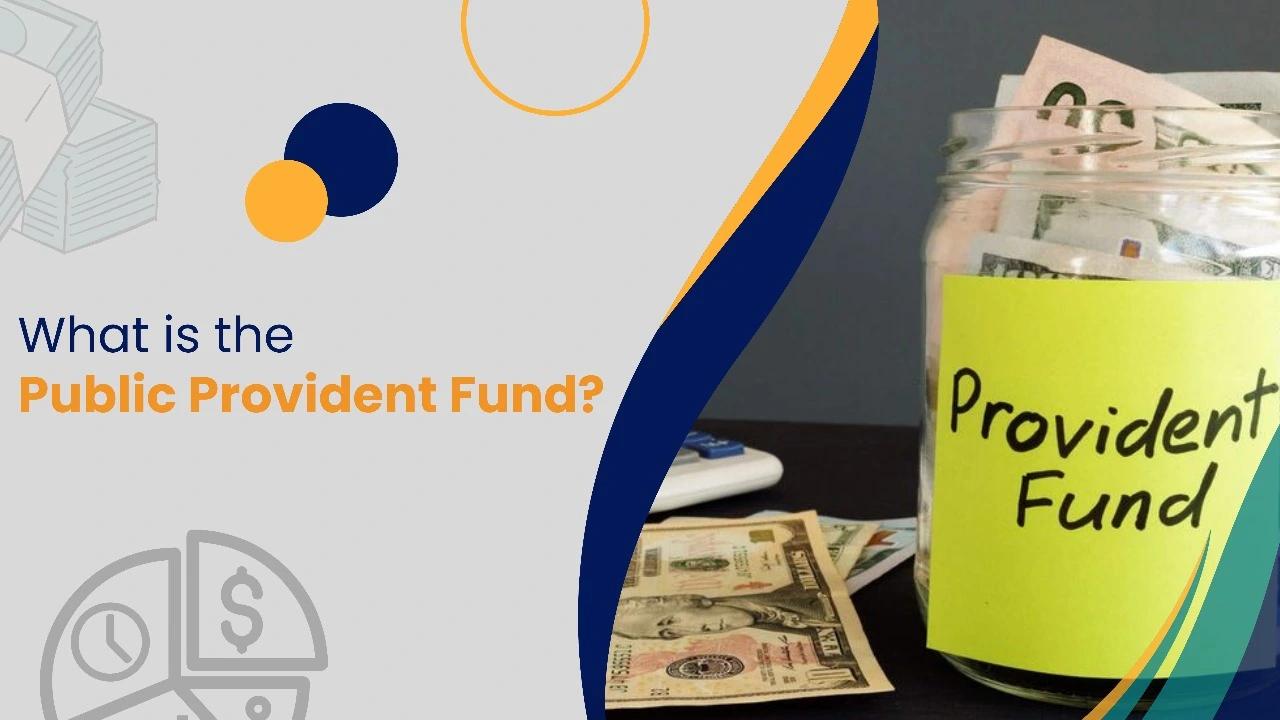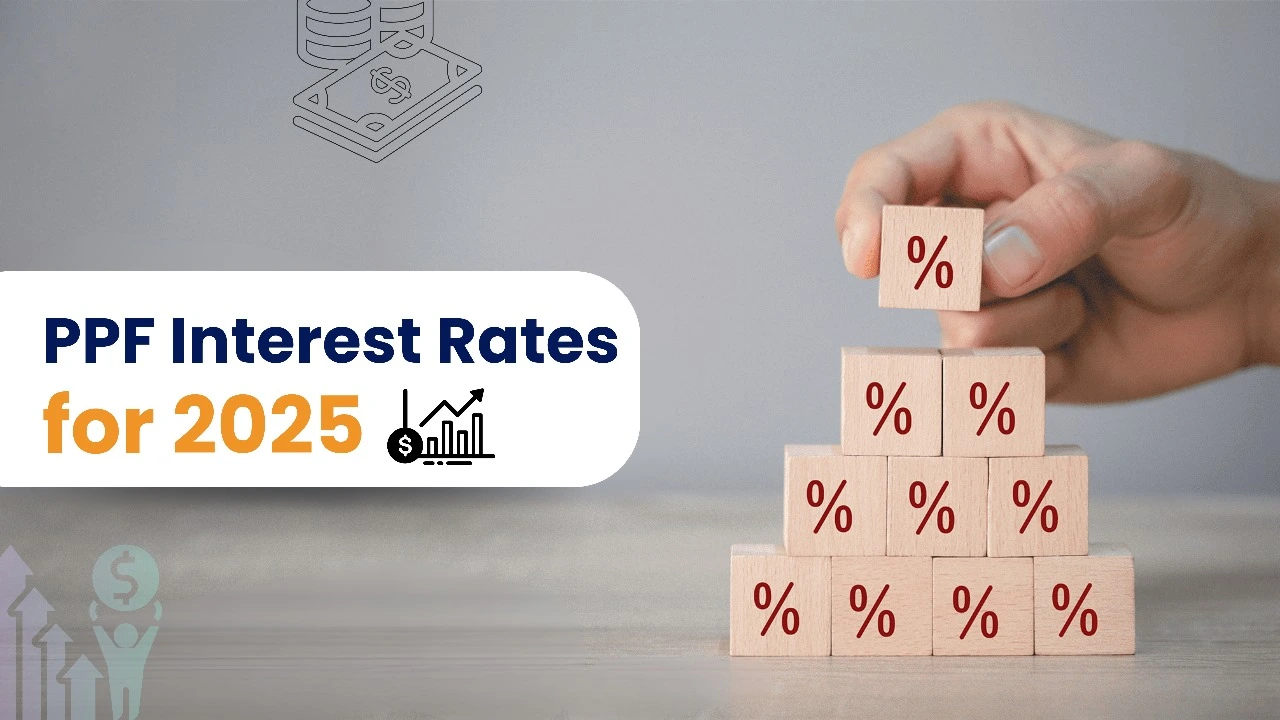
PPF Interest Rate 2025: Expected Rates, Changes & Benefits
Taking a deep delve into several investment opportunities currently available in the market, Public Provident Fund or in short PPF stands out to be a lucrative option for many investors. PPF investment returns are quite high and this can be a point for you to invest in this scheme as well. But before investing it is crucial to have some knowledge and understanding of this scheme. You should also know the PPF interest rate in 2025 before investing any money. Let’s now understand this investment plan.

What is the Public Provident Fund?
PPF or Public Provident Fund was established in the year 1968 to revolutionize and upgrade small savings into a high-return investment while offering tax benefits as well. It serves as a reliable technique for developing and accumulating a retirement corpus. With its Exempt-Exempt-Exempt or in short EEE status, the invested amount, accrued interest, and maturity proceeds are entirely tax-free.
Understanding the interest rate mechanism of PPF
Like any other investment scheme, the PPF interest rate is also determined by the Government of India. The Government of India reviews the interest rate on a quarterly basis. These rates are usually influenced by the yields of government securities and are intended to cater to investors with good return options that are both secure as well as competitive. The objective is to encourage long-term savings among the public by offering a reliable investment avenue.
How Is the PPF Interest Rate Calculated?
As you opt to invest in this scheme, you need to understand the technique of calculating the interest rate. PPF interest is usually calculated based on the lowest balance in the account between the 5th and the end of every month.
- If you think to deposit funds before the 5th of a month, you can easily earn interest on that amount for the entire month. This provision is quite lucrative. Otherwise, interest is calculated based on the previous balance.
- For those making monthly contributions, the timing of deposits which may be before or after the 5th has only a minor impact, typically affecting interest earnings by a few hundred rupees over time.
- Investors making a hefty annual contribution should deposit before April 5th to maximize interest earnings for the entire financial year, as the April interest will be calculated on a higher balance.
These are some of the points that you should keep in mind as you are investing in PPF.

PPF Interest Rates for 2025
PPF interest rate history depicts that the rate of interest has not fluctuated much. For the 2025 rate of interest as of now, there has been no official announcement. The rate remains at 7.1%, consistent with the trend observed since April 2020. This is a positive mark of PPF that the rate of interest more or less remains constant without much change.
However, discussions among financial experts show good news may come for investors as there is an anticipation of a potential rate hike. This expectation stems from the fact that PPF returns are currently lower than the formula-based rates as suggested by the Reserve Bank of India’s (RBI) committee. The RBI has acknowledged the fact that the current PPF rate is 41 basis points (0.41%) lower than the rate suggested by the formula.
Investors are hopeful that the government will address this disparity in its upcoming quarterly review. Nonetheless, until an official update is provided from RBI, the PPF interest rate remains at 7.1%.
Why opt for a PPF investment scheme?
There are many factors that will help you to choose Public Provident Fund as your next investment option.
Reliable and safe investment option
A risk-free return policy makes PPF a safe investment opportunity. PPF is backed by the government, the returns are also guaranteed by the Government of India, this makes it an ideal investment opportunity for people who are not willing to invest in risky platforms. The interest rate along with revised quarterly, ensures reasonable growth without the arbitrariness associated with market-linked investments.
Long term plan
PPF also inspires long-term wealth generation. With a fifteen-year lock-in period, this plan makes investors adopt a saving habit in a disciplined manner. Also, partial withdrawals and loans are available after some years, providing liquidity at the required time.
Exemption from tax
Tax exemption is one of the biggest merits of investing in this PPF scheme. Contributions to the PPF account are tax-exempted under Section 80C of the Income Tax Act, and interest received as well as the amount on maturity are entirely tax-exempt. Hence, PPF is a tax-friendly investment option.
Consistent PPF return rate
In addition, PPF also offers compound interest returns resulting in significant wealth buildup over a long tenure. Due to its security, tax benefits, and consistent PPF return rate, it is still a favorite among investors who prefer to invest in a safe financial platform.
Factors Determining PPF Interest Rates
There are indeed several factors that contribute to determining PPF interest rates:
Government Securities Yield: PPF rates are correlated with the yields of government securities of the same maturities. A fall or decline in these yields can cause a decrease in PPF rates, and the reverse.
Economic Conditions: The current economic situations, including inflation levels and financial policies or schemes, determine the government’s decision regarding changing interest rates to ensure economic stability.
Policy Choices: Government policies intended to encourage savings and financial investment may prompt PPF rate changes in line with wider economic objectives.
PPF continues to be one of the safest and tax-saving investment choices for individuals wanting long-term economic security in India. With its low public provident fund interest rate, government guarantee, and tax-free interest, it continues to lure investors interested in a secure and lucrative savings scheme. Although the PPF rate for 2025 is 7.1%, hopes are quite high for a revision expecting an increase in the rate chart as per expert deliberations and RBI suggestions. Despite any future modifications, PPF’s advantages, such as risk-free income, tax benefits, and orderly savings, make it a popular option among many.
Prior to making investments, knowing how it works guarantees more effective money management and higher returns. To gather knowledge on investment opportunities and financial tips and tricks keep reading Minty Cents, and we will keep you updated with the market.
Disclaimer – This blog is for informational purposes only. Before conducting any investment, it is advisable to carry out comprehensive research.
Frequently Asked Questions (FAQs) About PPF Interest Rate
1. What is the current PPF interest rate for 2025?
As of now, the PPF interest rate remains at 7.1%, the same since April 2020. However, financial experts anticipate a possible hike based on RBI’s recommendations. The final rate will be confirmed by the government in its quarterly review.
2. How is the PPF interest rate determined?
The interest rates on PPF are determined by the Government of India quarterly, depending on government securities yields, financial conditions, and policy. The intention is to offer a secure and stable return on investment for long-term savers.
3. How is interest computed on my PPF balance?
Interest on PPF is computed on the lowest balance between the 5th and the last day of the month. To get maximum returns:
- Deposit money before the 5th of each month to receive full interest advantage.
- If an annual lump-sum payment is being made, it should be done before April 5th in order to earn interest for a year.
4. Is PPF a risk-free investment option?
Yes! PPF is backed by the government, hence one of the safest investments. Your interest and principal are safe, making it perfect for conservative investors.
5. Are returns from PPF tax-free?
Absolutely! PPF has an EEE (Exempt-Exempt-Exempt) status:
- Deposits are eligible for deductions under Section 80C.
- Interest earned on it is free of tax.
- The amount that matures is wholly exempt from taxation.
6. Can I take money before 15-year maturity?
Yes, but with terms:
- You are permitted partial withdrawal from the 7th year.
- Loan facility against PPF is granted from the 3rd fiscal year.
- Full withdrawal is not allowed until after 15 years, but you are permitted extension in 5-year intervals.
7. Will interest rate of PPF be hiked in 2025?
Though there is no confirmation from RBI, it is expected that there can be an increase because the present rate is below RBI’s formula-based recommended rate. The investors expect the rate to be revised upward in the coming quarter review.
8. What is PPF vis-a-vis FD or Mutual Funds?
- PPF: Tax-free, risk-free, but frozen for 15 years.
- Fixed Deposit (FD): Certain return, tax payable on interest, shorter term.
- Mutual Funds: Higher return, but risky depending on market.
9. How much can I invest in PPF every year?
The lowest investment is ₹500 a year and the highest is ₹1.5 lakh a year. You can invest in a lump sum or 12 monthly installments (max 12 a year).
10. How do I open a PPF account?
You can also open a PPF account from any post office or big banks such as SBI, ICICI, and HDFC. Online opening of a PPF account is also possible in the majority of banks.












